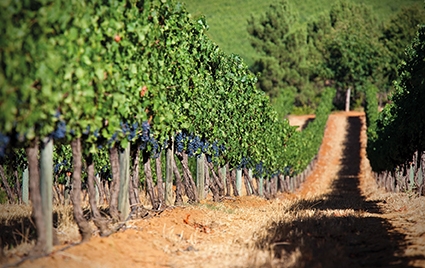Bakhtadze Draws Attention to Rural Poverty
On Wednesday, Prime Minister Mamuka Bakhtadze met with students at the Botanical Garden of Zugdidi, in the Samegrelo region of central Georgia. He took questions from the audience, and one student asked the Prime Minister about rural poverty, to which he responded, “Today almost half of our population is engaged in agriculture, but the share of agriculture in our economy is below 10%. The main source of poverty is this disproportion.”
Bakhtadze advocates taking a new approach to agriculture, saying, “Our economic model is totally oriented to imports and this is a very bad model. Not because free trade is not good, but because it is related to unfair rules of the game, which led to the decline of agriculture.”
US-based non-governmental organization The Borgen Project reports that there are two major causes of rural poverty in Georgia: agricultural stagnation and limited access to and low quality of social services. While Bakhtadze blames Georgia’s high rate of poverty on the low productivity of the agricultural sector, The Borgen Project points to “fragmentation of land, poor connectivity to markets, weak support services and degraded rural infrastructure” as the cause of the sector’s low productivity.
According to the World Bank in 2016, at a poverty line of $2.50/day, 32% of Georgians live below the poverty line. 43% of rural Georgians live in poverty, while only 21% of urban Georgians live in poverty. The National Statistics Office of Georgia reported in 2015 that 7.1% of the Georgian population lives below 40% of median consumption, thus experiencing extreme relative poverty. 4.5% of urban Georgians and 9.6% of rural Georgians consume less than 40% of the median consumption rate.
“The economic growth that Georgia has recorded is largely unrelated to agricultural development;” says the Borgen Project, “rather, it is due to a foreign investment focus on real estate and banking, and... the downward trend in agrarian production has been accompanied by a growing incidence of rural poverty.”
In rural areas, access to education is a severe problem, particularly for ethnic minorities who often do not speak the state language. There are few opportunities for high quality vocational or technical education outside Tbilisi, and even fewer universities. In 2002, the government announced poverty as a priority sector for growth, and government spending on poverty reduction has increased from 1%to 3% since then.
Despite increases in government spending, support from international aid organizations and private donors and consultants, the Georgian agricultural sector experienced low growth 2014-2016, and in fact decreased in 2017.
Since 2012, the drivers of Georgia’s economic growth have been construction (11.2%), hotels and restaurants (11.2%) and the financial sector (9.2%). In 2017, agriculture lost some of its place in economic contributions to the country, at -2.7%.
While, overall, Georgia’s agricultural sector has consistently low growth or decreases, one crop does consistently well – wine grapes. In 2017, $170 million of wine was exported from Georgia, surpassing hazelnuts as Georgia’s most valuable agricultural export. As The Financial reports, “2017 was the year when the government started [moving away] from direct subsidies for grape prices; only 19 million GEL [$7.7 mil] was expended, compared to 36 million [$14.6 mil] in 2016.” The government plans to continue offering a reduced subsidy for grapes, encouraging the sector’s independent growth and sustainability.
In its most recent Welfare Monitoring Survey in Georgia, UNICEF reported that the average household income in Georgia was GEL 771.9 ($314) a month in 2017, and 608.9 ($248) in 2015. While non-monetary indicators of child poverty have improved, consumption poverty is increasing. Survey findings show that children have more durable goods in their households and there are fewer children living in poor housing conditions than in 2015, but monetary poverty indicators are on the rise. Almost 9.3% of urban children and 32.9% of rural children live in households with unimproved sanitation facilities. UNICEF Georgia attributes increased poverty rates primarily to a lack of strong and inclusive economic growth, unemployment, and higher consumer prices.
By Samantha Guthrie












